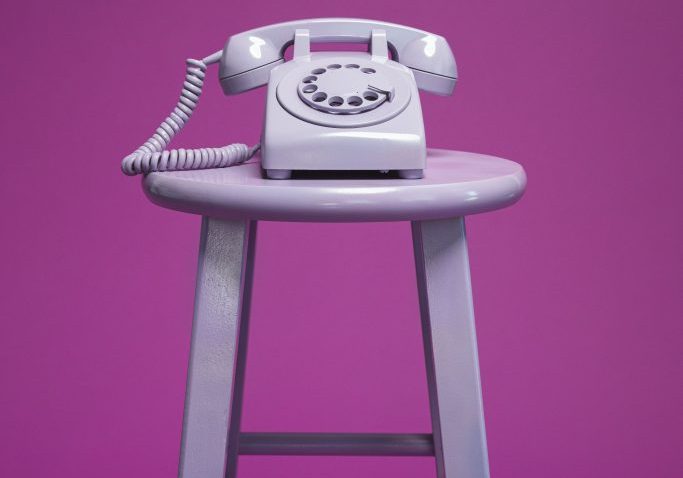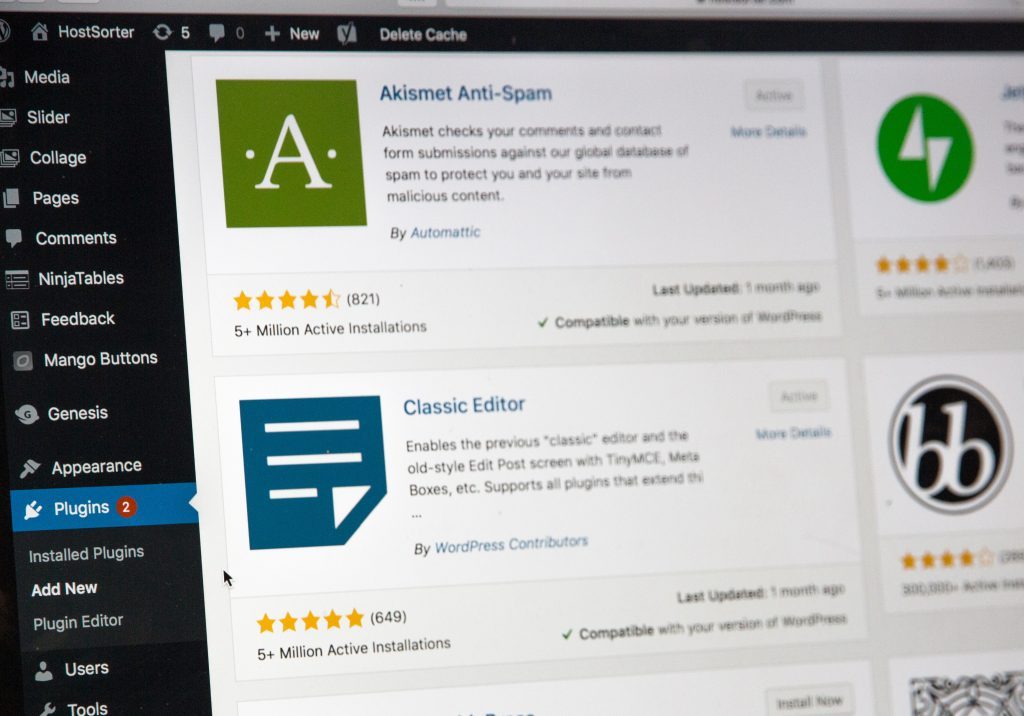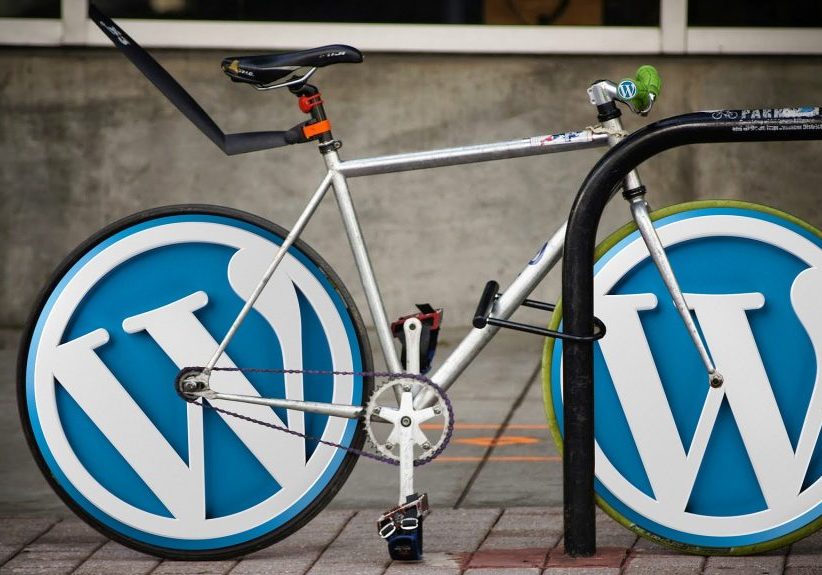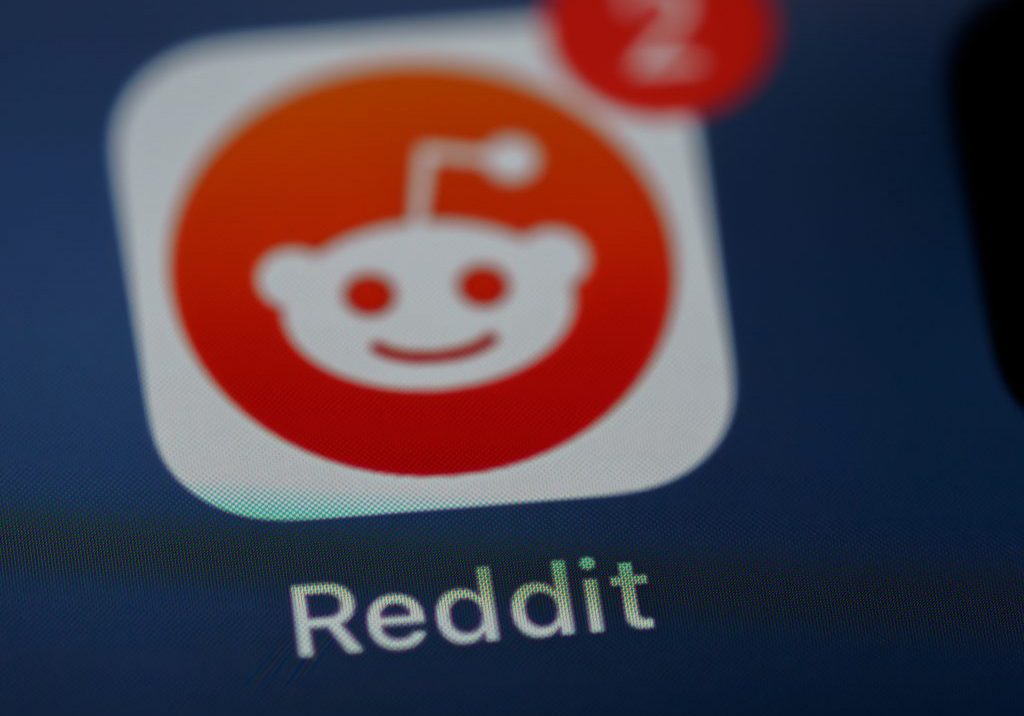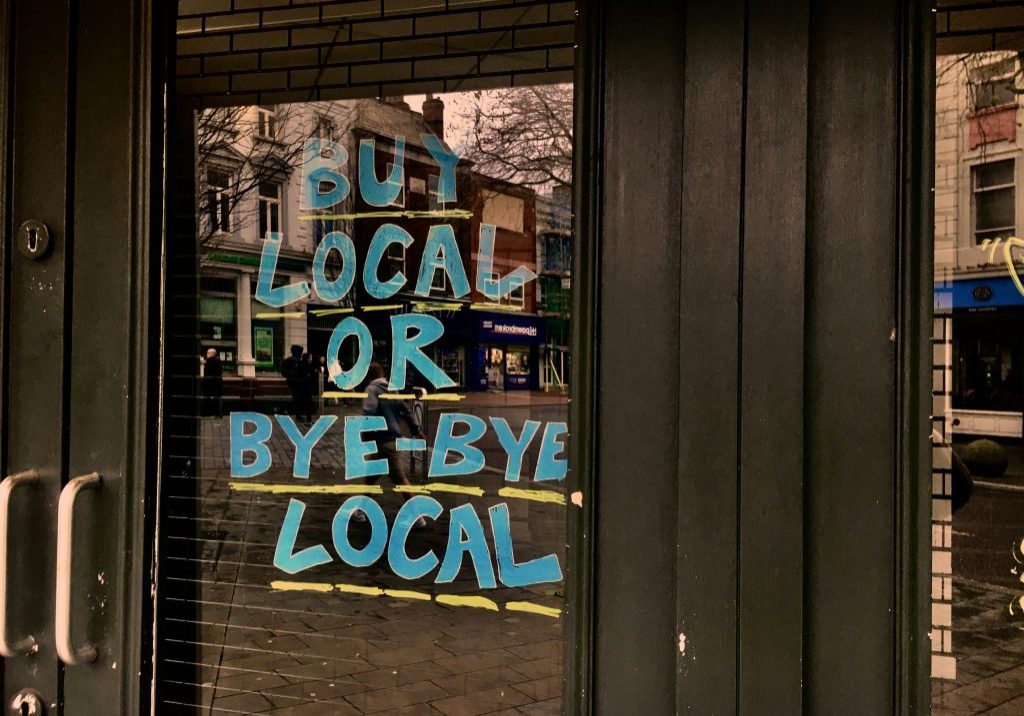What Is A Landing Page?
A landing page is a dedicated destination page on your website which focuses on one key product, service, industry or location. They’re often used alongside Pay Per Click and Facebook Advertising campaigns, as they deliver all the key information needed to drive conversions.
Usually, a landing page will have one or more option to ‘convert’; this is often via a contact form, live chat or telephone number within the same page.
What Makes A Good Landing Page?
A good landing page should be a ‘one stop shop’ for your customers, giving them all they information they need on a specific subject, with no clutter or fuss. In theory, a good landing page offers two choices; convert or leave.
Why Isn’t My Landing Page Converting?
There are a number of reasons why your landing page isn’t converting, even if you include all the bits and bobs we’ve mentioned below. Here’s the main reasons why your page isn’t converting;
- Lack of trust on your page, which stops users parting with information
- A landing page that’s too busy, with too many scripts or distractions that put users off, or stop your page loading altogether!
- Mismatched copy, which doesn’t focus on the key topic of the page
- Too many barriers to conversion, such as needing too much information, or an overly complicated form
- Your product or service just isn’t right; there’s not a lot you can do if you’re too expensive or just not in demand
Pro Tip: Test, test, test! You should be using your landing pages as a customer would, regularly. Better yet, ask others to do the same. Often, there are glaring issues on landing pages which prevent conversions, which could be fixed pretty quickly.
What Should Be Included On A Landing Page?
There are a few key elements to a good landing page, some more obvious than others. Here’s a quick breakdown of all the things we usually include on landing pages, click any to jump to that section:
Contact Form
Other Means Of Contact
Trust Marks
Testimonials & Feedback
Images
Enticing Copy
An Attention Grabbing Heading
Features & Benefits
Anchor Points
Contact Form
An easy, unobstructed means of capturing lead information is key to any good landing page, this is usually done with a clean, easy to use contact form. When constructing a form specifically for a landing page, it’s important to balance the quality of leads with the quantity. Keep in mind that, generally, the more information you ask for up front, the lower your form conversion rate will be. On the other hand, a poorly constructed form, that doesn’t ask key qualifying questions may bring in more enquiries, but you’ll find that your sales team struggle to fully convert these further down the line.
So what should you include on your landing page contact form? At the very least, you’ll need to capture contact information, such as customer email address and telephone number. It also pays to get a little information about the nature of your customers inquiry in advance, such as a drop down menu asking ‘Which service are you interested in?’ or ‘What is your budget?’.
Adding drop down or radio selector buttons to your form is a good way to weed out poor quality leads, as they’re quick enough for a potential customer to use, whilst still capturing important qualifying information.

Other Means Of Contact
Modern customers need modern solutions, which means options for contacting on landing pages are ever more sophisticated. Adding a ‘live chat’ or ‘message us’ function can get the conversation started, without many barriers, boosting your overall landing page conversion rate.
In some cases, customers may be apprehensive filling out a contact form, especially if they think it’ll lead to hassle from sales teams, or an instant call back that they can’t take (if they’re on your landing page during work hours for example). Offering other means of contact can overcome these issues, helping your business to connect with potential sales.
If you’re building a landing page on a WordPress website, there are plenty of plugins you can use that provide live chat functionality, our personal favourites are Facebook Official Live Chat Plugin and WhatsApp Click To Chat.
Don’t forget a good old fashioned phone number too! Inbound calls can often be the most lucrative leads of all. After all, a customer that’s willing to pick up the phone and chat is often pretty keen to take up your services or buy your products.
Trust Marks
Trust marks such as accreditation logos, industry awards and feedback ratings (such as Trip Advisor logos) will really help your landing page convert. Recent studies suggest that a massive 48% of people will only convert if trust marks are present!
If you’re running an eCommerce website with category landing pages, think about your previous shopping experiences. To get over the frankly, shocking statistic, that 75% of all carts are abandoned before purchase, you’ll need to instill plenty of trust in your site visitors. Consider adding information about shipping, such as free shipping, next day delivery or carrier type (for instance; ‘Royal Mail First Class’) as well as industry recognised payment logos, such as Visa and Master Card. These can often be downloaded free from merchant sites, but make sure you follow their artwork guidelines.
Testimonials & Feedback
Another way to instill trust into your site users, resulting in higher conversion rates is to include clear and concise testimonials from your previous clients or customers. It’s no secret that people are more inclined to buy from companies their friends have recommended and customer reviews are the next best thing. In fact, 88% of converters will incorporate reviews into their purchasing decision.
Ideally, your on page reviews will refer to that specific product or service only, but if you’re a little light on feedback (for instance, if you’re a relatively new business that’s yet to follow up on existing customers) we recommend adding more general testimonials that indicate how professionally your business operates.
If your company is lucky enough to have amassed a fair amount of feedback, you could be eligible to connect to external review sites such as Trip Advisor or Feefo.
Images
Your landing page should include relevant images, not only will they improve the overall user experience, they’re also good for SEO. Remember to include relevant Alt Tags on all your images so they’re easily identified and indexed by Google.
Enticing Copy
OK, we’re gonna level with you, writing engaging and enticing copy is an art-form in itself, if your landing page has poor copy, there’s no amount of fancy artwork, swish graphics or trust marks that will save you, users simply wont convert. If writing landing page copy isn’t your bag, we highly recommending finding someone who knows what they’re doing (hey, we’re pretty good at it, why not contact us for a chat?).
Your landing page copy (i.e the text on your page) should explain to potential customers that you understand their pain or pressure points and how your product or service can help. As well as this, think about conveying the ease of use of your product or service, removing any potential barriers a user may have before they convert. Common tactics include equating your product to a daily rate (‘less than the cost of one coffee per day’) and providing introductory periods with no risk (‘We even offer two weeks free trial’).
Here’s how we usually pitch our landing page copy;
- What is the customers current problem?
- What’s your solution (product or service)?
- How will this solve the solution?
- What will life look like after your customer uses your solution?
- Why should they choose your business?
- What do they do next?
We find that, when writing landing page copy, it actually does pay to keep Google in mind (usually, a no-no). Imagine your landing page is to be used specifically for one keyword on Google Ads, if a user were to click through, how relevant would the page be to that keyword? Would it offer enough information? Would in be ultra specific and on topic? What would your page relevance score be on Google Ads?
If you’re confident you’ve nailed these criteria, there’s no reason why your page shouldn’t convert well.
An Attention Grabbing Heading (& Subheadings)
Your heading or page title plays a pivotal role in keeping site visitors on your page, essentially acting as the first indicator that they’re in the right place. Our advice is not to be too clever.
A good rule of thumb with your main heading is to always include the page title, or topic and not too much else. You can always use a subheading to give a little more (but no less punchy) information.
Don’t forget to add relevant title tags to your page, with one H1 tag, multiple H2 tags and a coherent, sensible structure throughout. This will help your overall Google rankings. If you’re unsure what we mean, think about this blog post, our H1 is right at the top; ‘What Makes A Good Landing Page?’, our subheadings (H2) include; ‘What Should Be Included On A Landing Page?’ and ‘What Are The Main Types Of Landing Page?’ and our subheading-headings (is that even a thing?) (H3) include ‘Images’ and ‘Testimonials & Feedback’.
You can use multiple H2, H3 and H4 tags to denote sub headings and headings within them without much trouble.
Here’s an example layout of title tags that’s perfectly acceptable when it comes to Google indexing;
H1 Page Title
>H2 Subheading 1
>>H3 Subheading Section 1
>>H3 Subheading Section 2
>>H3 Subheading Section 3
> Subheading 2
>>H3 Subheading Section 1
>>H3 Subheading Section 2
>>H3 Subheading Section 3
Features & Benefits
Features and benefits obviously help to convey why your user should convert, but we thought we’d labour the point because there are different methods to showcasing features and benefits. Here’s our two favourite methods:
Bullet Point Features & Benefits
Use bullet points, early on in your landing page to quickly outline the features and benefits of your products or services. We’re also pretty keen on using ‘tick’ emojis which really catch the eye too.
Features & Benefits Row
Another option for displaying your product or service features and benefits is to use a dedicated row within your landing page, which includes each feature, with a relevant icon. This is an eye catching option which will really flesh out your page, improve the overall experience and should increase conversion rates. You could break up features and benefits with this method into ‘Our Product Features’ and ‘Why Choose Us’.

Anchor Points
Anchor points are links on your landing page which, when pressed will auto-scroll to another area on the same page. This is different to a regular link, which usually directs users to another page or destination altogether. Whilst anchor points are regularly overlooked, they can give a major boost to landing page conversion rates, particularly when optimising for mobile.
Think about it like this, you’re on a landing page which is really informative, you’ve spent the last ten minutes reading the awesome copy that’s clear, concise and really makes you want to take things one step further, you’re ready to convert, by filling in a form. The problem is, you’re halfway through a 50000 word paragraph, with no end in site, with no form to be seen as it’s at the footer of the page, here’s your options; scroll endlessly for the next ten minutes until you reach the form or, as is often the case, click ‘back’ on your browser, never to be seen again.
Anchor points can nullify this issue, instantly. Including timely links to your form, either at the end of each paragraph, or placed seamlessly within text, will let your users, whenever they’re ready to convert, quickly access your form, hassle free.
As we said, this is particularly important on mobile, where pages may be consumed in one long scroll!
Why Isn’t My Landing Page Converting?
There are a number of reasons why your landing page isn’t converting, even if you’ve included everything we’ve mentioned above. Here’s the main reasons why your page isn’t converting;
- Lack of trust on your page, which stops users parting with information
- A landing page that’s too busy, with too many scripts or distractions that put users off, or stop your page loading altogether!
- Mismatched copy, which doesn’t focus on the key topic of the page
- Too many barriers to conversion, such as needing too much information, or an overly complicated form
- Your product or service just isn’t right; there’s not a lot you can do if you’re too expensive or just not in demand
What Are The Main Types Of Landing Page?
Landing Pages For PPC (Google Ads)
PPC, including Google Ads and Bing involves sending traffic to your site on a pay per click basis. Essentially, you’re paying for traffic to enter your site. With this in mind, you’ll want to maximise your opportunities, sending users to dedicated PPC landing pages which deal exactly with what they’re looking for.
When drawing up your landing pages for PPC, a good rule of thumb is to use one landing page per Ad Group. This will help you tailor your on page content, as well as drive down your overall cost per click. How? Google factors in landing page quality when determining your click cost, with closely related pages to keyword terms needing a lower budget than poorly matched, or mismatched landing pages to keyword.
Landing Pages For Social Media
Paid advertising on social media really is growing every day, so there’s a strong chance you’ll want to try a few ads for your business at some point. For some reason, most businesses don’t treat their social media advertising the same as they do PPC, this is a mistake! If you’re sending traffic from social media platforms, using ads on Facebook or Instagram for example, it pays to offer a seamless experience, with a landing page that’s closely matched to your campaign.
Think about matching artwork on both your ads and landing page, with similar wording to provide a better user experience that increases overall conversions.
Landing Pages For Industry Sectors
Industry sector landing pages can help your website target highly lucrative long tail keywords, whilst delivering all the industry relevant information you’ll need to convert specific users.
Think about it, a ‘one man band’, sole trader type business will probably need different information than a national, corporate chain. They’ll also have different needs, especially when it comes to service features and benefits. A sole trader may be busy, which means ease of use is key, where as a larger company may prefer service transparency and up to date reporting.
Creating landing pages that are tailored to these industry nuances, with copy to match can really work wonders for your overall sales pipeline. An extra bonus is the remarketing options, with different landing pages helping you to segment markets further down the line, when advertising on social media for example.
Landing Pages For Service Areas
Landing pages for areas you cover can really boost your Local SEO, helping your site to show up in Google’s Map Pack and [Service in Location] searches such as ‘Marketing Agency In Sheffield’. It doesn’t really matter if you have a physical address in these areas, as long as you’re happy to service them, if you do however, be sure to add a map and NAP (Name, Address and Phone Number) wherever possible.
We’ve had a lot of success with area landing pages, focusing on hyper local search terms which drive conversions, whilst not having to compete with more generic, competitive terms, so they’re well worth thinking about. If you want to find out more about Local SEO, we’ve put together a pretty handy guide on the whole thing.

The Wrap Up
It’s no secret in the digital marketing world that landing pages are an absolute must, especially if you’re looking to monopolise SEO keywords or running pay per click campaigns. The thing is, not all landing pages are created equal and, in some cases, despite covering the same topics, sometimes even on the same sites, two landing pages can have wildly differing conversion results.
Hopefully, using this blog as guidance will help you maximise your landing pages and see conversion figures creep up. Don’t be afraid to split test different elements, we’re experts, but we always recommend a little trial and error. You may find that certain form, aesthetics work better than others for example, or copy style affecting user experience.
Don’t forget, we’re always here to help! Drop us a message on WhatsApp using the icon below with you’re questions and we’ll see if we can help. As always, don’t forget to share this with your colleagues using the buttons below.
Thanks for reading!


